
Spiti Valley, yet to be as popular as Leh-Ladakh, is an exceptionally picturesque place in Himachal Pradesh-India. A place screaming to get seen, appreciated, and loved by its ever-growing visitors. A mesmerizing landscape on this part of the planet that needs to be explored deeper by nature-lovers.
Though famous for its snow leopard sightings during the winter months, the time to visit Spiti Valley is actually around the year. The landscape presents alluring scenery throughout. Right from the time you reach Shimla (Queen of Hills) until you circumvent the marked stretch and get back to Manali.
So, in consultation with your adviser, Chandigarh-based Ranjeet Singh, of The Himalayan Monk, you assiduously plan your Spiti Valley Tour. Now, at Chandigarh airport, enthusiastic Rajneesh is ready with his Innova to take you on this 11-day adventurous trip. Then there you go, crossing several incredible landmarks, starting with Shimla.
After quick lunch at Hotel Lalit along the Kalka-Shimla National Highway, you by-pass Kumarhatti. From here, the climb up the mountain begins. You are now cutting through the white clouds and circumventing Cheel trees that crowd ubiquitous hill slopes.

On the way to Shimla
You then zip across the 2nd most populous city of Himachal–Solan. The place that is popular for its quality of mushrooms, hence nicknamed as the ‘Mushroom City of India’.

It’s 4pm. You have now entered Shimla (Queen of Hills), a city built on seven hills with an average altitude of about 7200 feet above sea level.
With limited time in hand, it is prudent to visit the iconic Mall-Road of Shimla before checking in at your hotel.
Once on the Mall-Road, after a short stroll along its shopping area, you reach a plateau known as Ridge. From here, you get a glimpse of cloud-filled hills all around you.
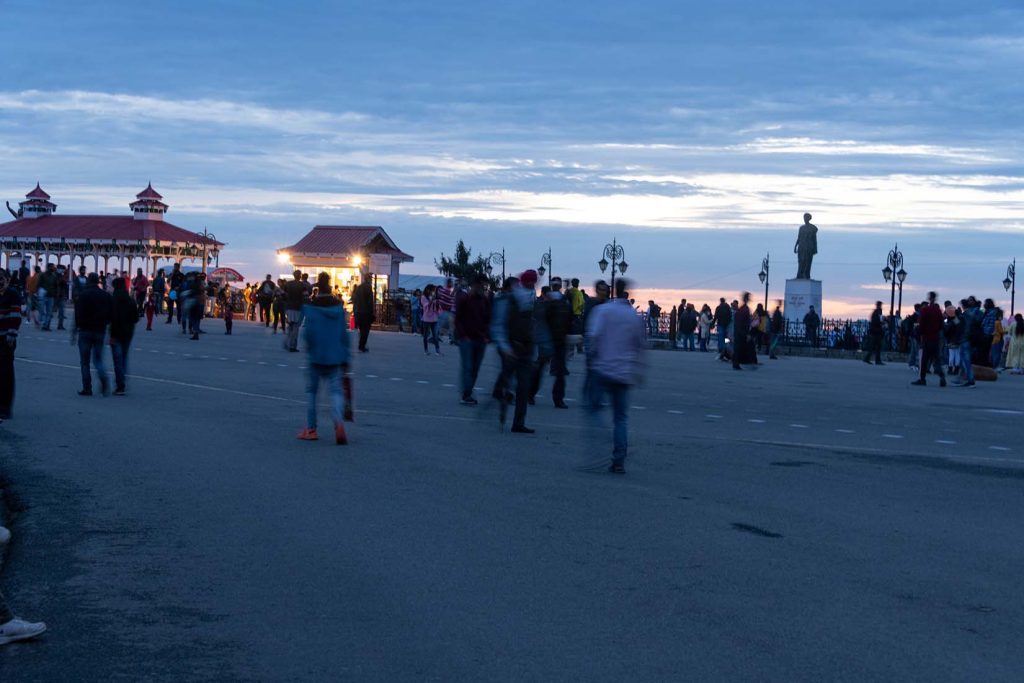

On your right is one of the oldest churches in this northern part of India. Called Christ Church, this impressive religious place of the Christians reflects a neo-Gothic style in its construction.
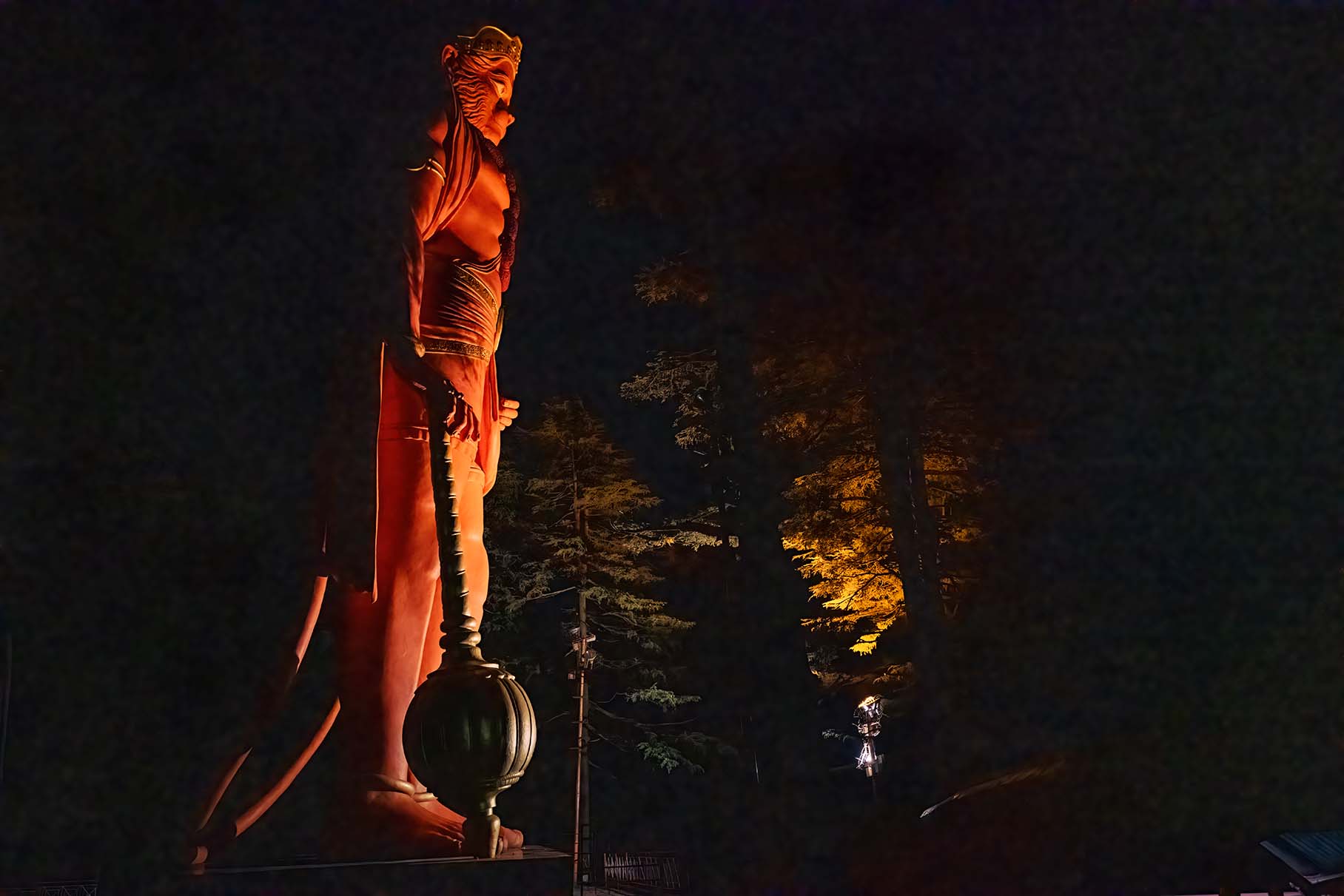
Serendipitously, as you take its pictures, a local guy prods you with an offer to take you to the Hanuman Temple in his car. Located atop Jakhu hill, supposedly the highest peak in Shimla, this place is worth a visit. At Rs. 400/-, you accepted his inciting offer without hesitation. However, he makes you walk a few hundred meters before he gets his car. And soon thereafter, you are at the foot of this impressive ancient Temple dedicated to Lord Hanuman. With astonishment, you watch one of the world’s tallest, towering 108 ft statue of Hanuman standing on its periphery. An amazing sight indeed!
Later, walking up several steps, you reach the temple which has the Deity Hanuman enshrined in the sanctum. Here, after paying obeisance, you stroll down the steps and are soon back with Rajneesh. From here, you then proceed towards your pre-booked hotel for the night’s stay.

Hanuman mandir – Shimla
The following morning, post breakfast, you embark on a relatively long trip this time. A trip that will take around eight hours covering approximately 200kms. While crossing Narkanda, a quaint little town at 3000ft, reputed for its ethereal beauty, the temperature drop gets fairly noticed as you wind up through the mountains.
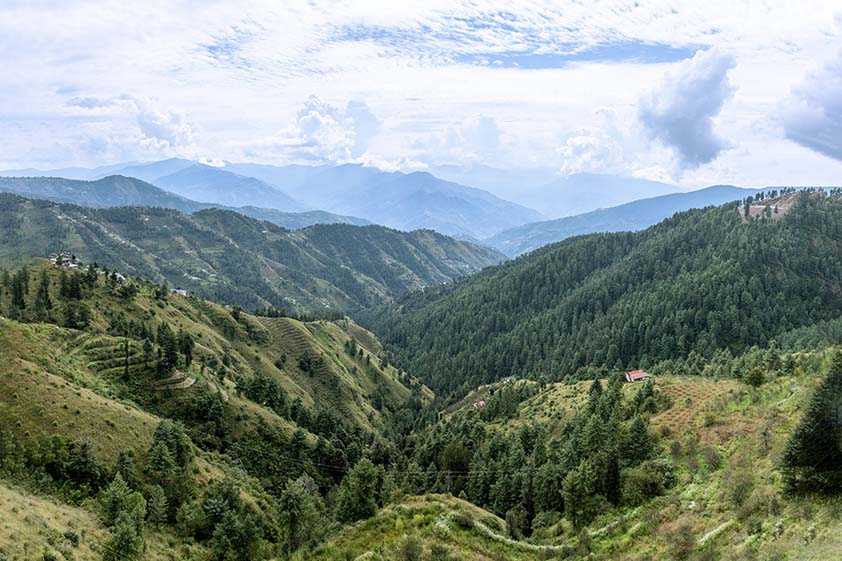
It’s much colder now, however, the weather has turned increasingly pleasant. Along the slopes you notice cheel trees gradually being replaced by the native deodar trees. The clouds are now floating below the level from where you are. Something arguably fills the mood with romance.
Even metaphorically, you feel yourself ‘Over The Clouds’. The excitement has escalated and romancing with the nature is the natural corollary.
Amongst these strong coniferous deodars, house amazingly colorful, albeit precariously built dwellings cascading over mountain slopes.
Now, 60 km after crossing Narkanda, a quaint little town at 3000ft reputed for its natural beauty, you once again descend the mountain. Later, passing by a small village, Kingal, you then drive close to the fabled Sutlej River for some time.
amcorper mattis, pulvinar dapibus leo.
Then comes the town of Rampur. Though a part of Shimla District Rampur is 130km away from the City of Shimla.
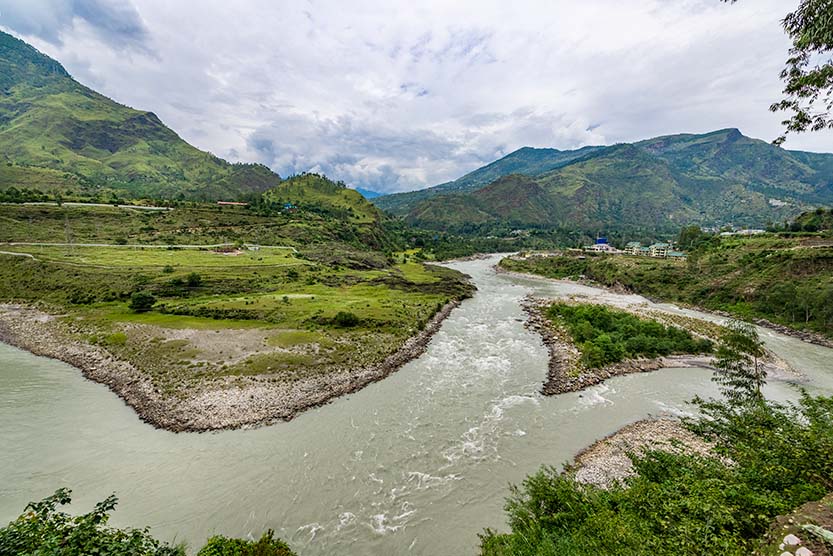
Sutlej River on the way to Sangla
It is 3 pm. You have now left the district of Shimla and have entered the Kinnaur district.
The roads carved out of the mountain edges are extremely narrow. A shiver is down your spine the moment you notice another vehicle approaching from the opposite direction. As both try to cross each other, you pray none misjudges and end up sliding down the deep cliff. Such fatal accidents are not uncommon on these roads.
However. your fear escalates while passing through the road in Naigulseri. The very road where days before, on 11th August 2021, over 40 bus passengers traveling towards Shimla fell victim to a massive landslide.
Later, crossing ‘Tapri’ you speed past an 1100 megawatts Karcham Wangtoo Hydro Electric Plant built on the Sutlej River. From here, the ascend towards Sangla, destination of the night halt, begins.
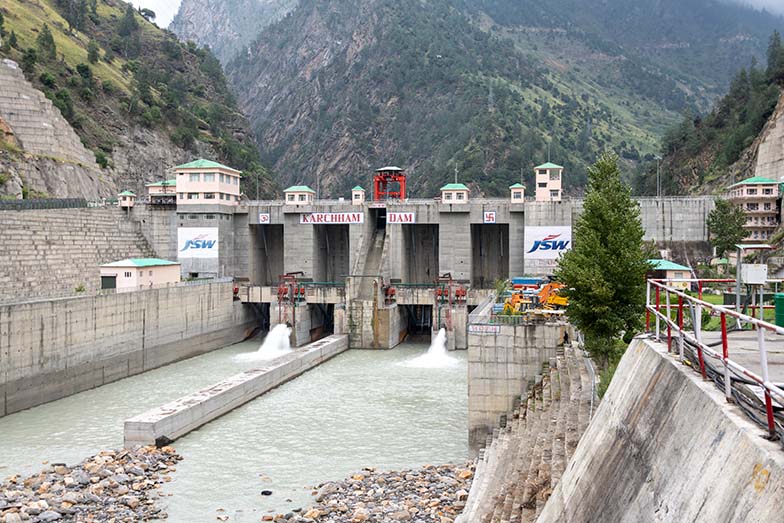
Karcham Wangtoo Hydro Electric Plant on the Sutlej River.
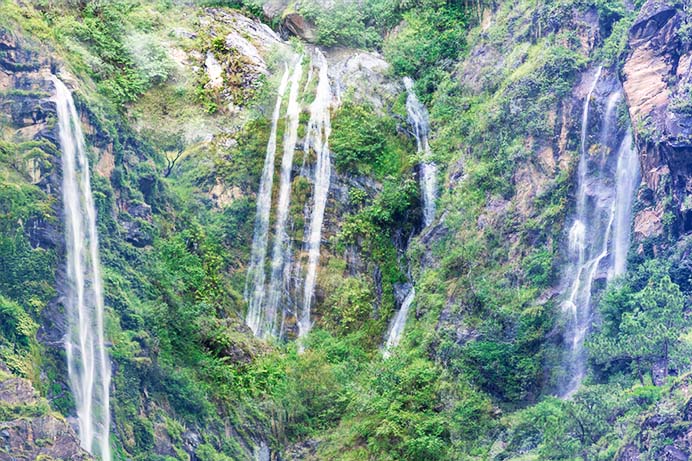
Stunning snow-capped mountains of Kinner-Kailash Range are now seen surround the valley. The Mesmerizing Waterfalls, though, keep you busy until you are 10 kms away from Sangla.
Here you literally get emersed within the clouds, completely enveloped within its thick white mist. The visibility now is for a few meters only and the caution has justifiably intensified. The cold air brushes you as you speed along the way, ensuring you keep your winter gears on.
Finally, driving parallel to the Baspa River, you reach the Sattva Pine Resort. In this beautiful place within the Sangla Valley, you are in for a two-night halt.
At the height of 8900ft, and on the banks of Baspa River, the sweet murmuring sound of the river flow relentlessly hits your ears as you relax in your allotted cottage. Subsequently, after some drinks followed by dinner, you are now prepared for a good rest.
The following morning, intermittent showers of light to heavy rain welcome you. Arguably an ominous sign that might jeopardize the day’s program to visit Chitkul, the last village on the Indo-Tibet border.
However, you request Yash, an amiable member of the staff at the resort, to accompany you for a stroll along the river bank. With an umbrella in hand and camera across your shoulder, you then go around capturing pictures of a few small but appealing water-falls.

Waterfall before merging with Baspa River
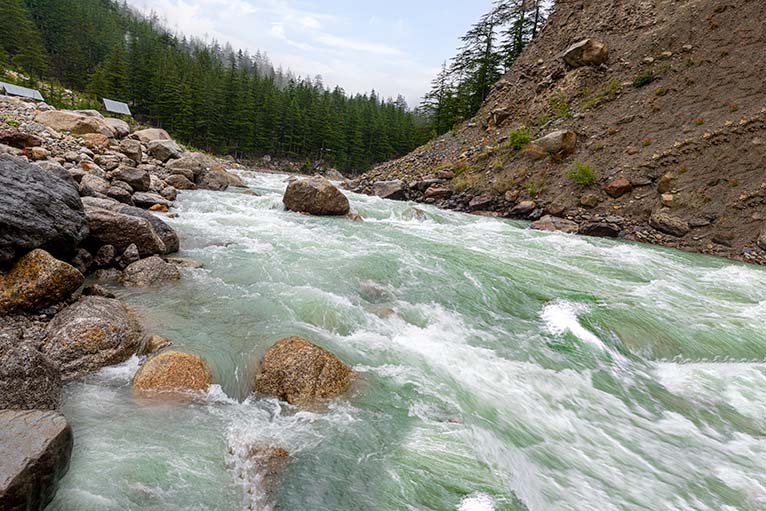
Baspa River
However, the rain gods have refused to relent. Embarking on the Chitkul visit is therefore difficult as well as dangerous. It’s prudent, therefore, to give-up the idea of going to Chitkul and instead visit the nearby Shree Badrinarayan Temple in the Batsari village that lies across the Baspa River. (This Baspa River incidentally merges with the might Sutlej before proceeding further)
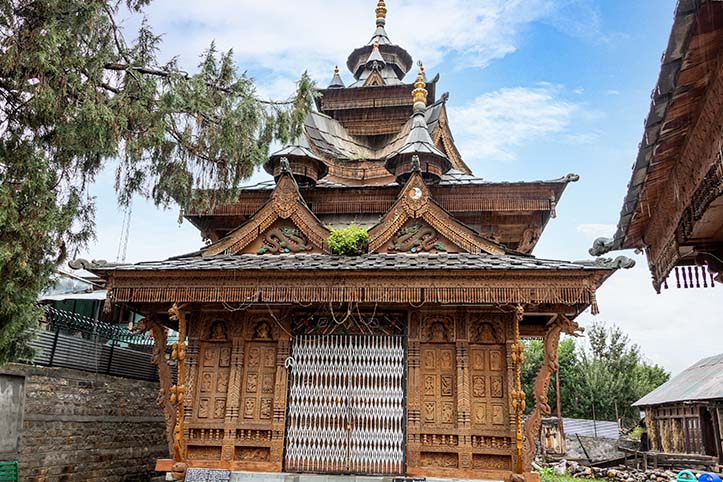
Shree Badrinarayan Temple
The rains have inadvertently wetted your camera gears and so have to be made free of moisture ASAP. A common hairdryer and the room heater now act as a panacea to overcome this immediate challenge.
The following morning, on the fourth day of your trip, you load your bags into the car and proceed now towards the next destination–Tabo via Kalpa.
So, climbing up and down the Mountains, and crossing Reckongpeo, the chief city of Kinnaur district, you reach Kalpa. A small town nestled in the Sutlej River Valley.
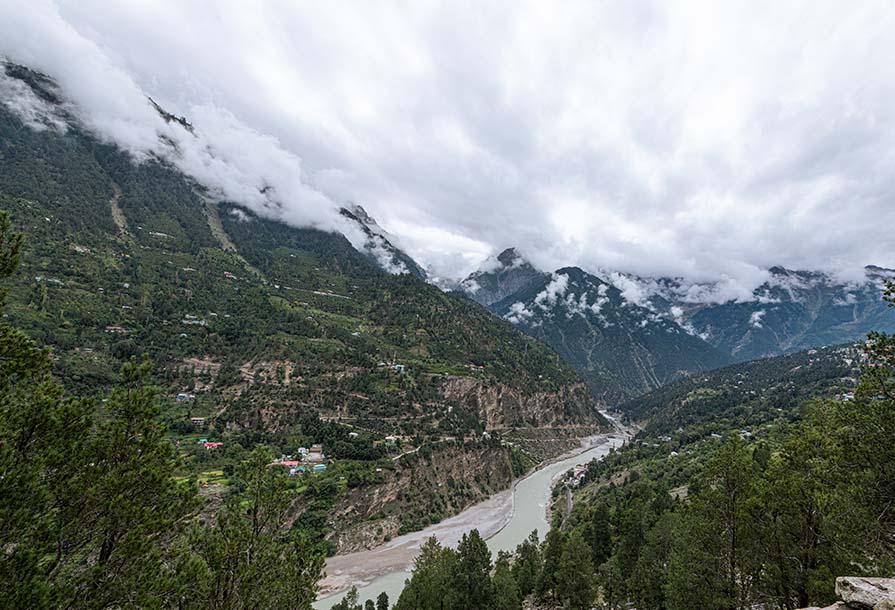
Just as you reach Kalpa, the revered Kinnaur-Kailash range can be seen on your left, provided it is not too cloudy. The Kinnaur-Kailash peak is worshiped incidentally by both the Hindus and the Buddhists living here.
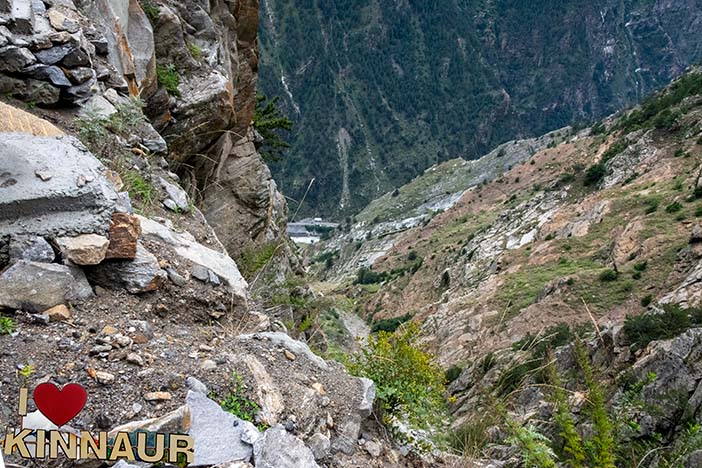
Suicide Point – Kalpa
On reaching Kalpa, you first visit the local monastery and then, crossing the Kalpa village, reach the suicide point. The view from the suicide point is phenomenal. Indeed! if you wish to die, there can be no better place to ‘rest in peace. (joking).
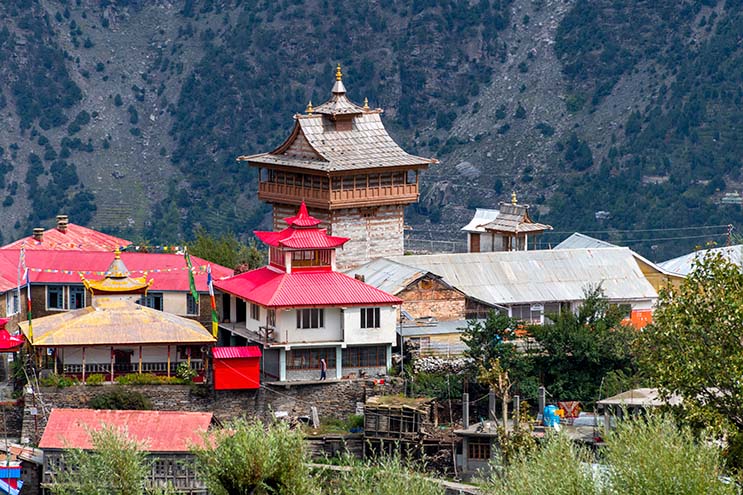
A little away, on your return, you see this attractive ancient Lochwa’s Buddhist Temple. A place of worship located right inside the main Kalpa village.
So, after a brief visit to Kalpa, you now begin the descent down till you get on the main road. From here on, you take the route leading to Kaza.
Along the way, you see a sudden and dramatic change in the landscape. The green mountain slopes have suddenly turned arid, signaling unequivocally Spiti has arrived. Stones of various shapes and sizes have replaced trees. Sutlej however and thankfully continues to flow by your side, and remains to give you company as you speed forward.
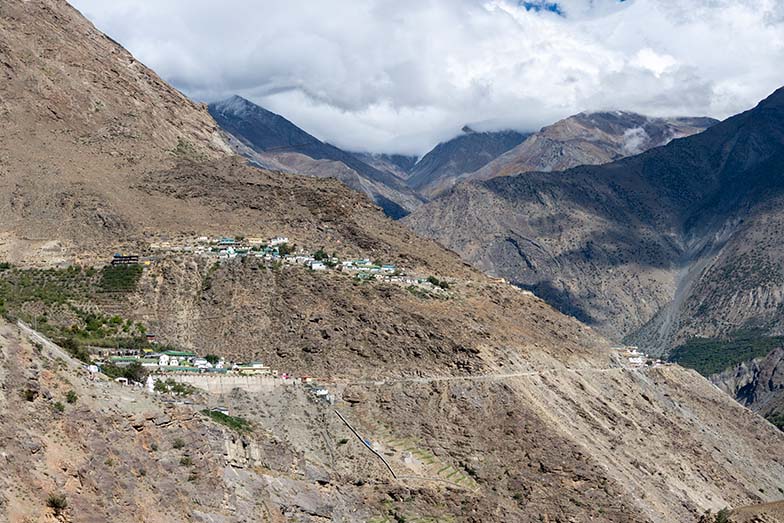
It’s 3 pm, and you have reached Khab. The spectacular confluence of Spiti and Sutlej rivers is happening right on your left. You stop. With your camera by, you swiftly walk towards their meeting area to take pictures of this magnificent merger.
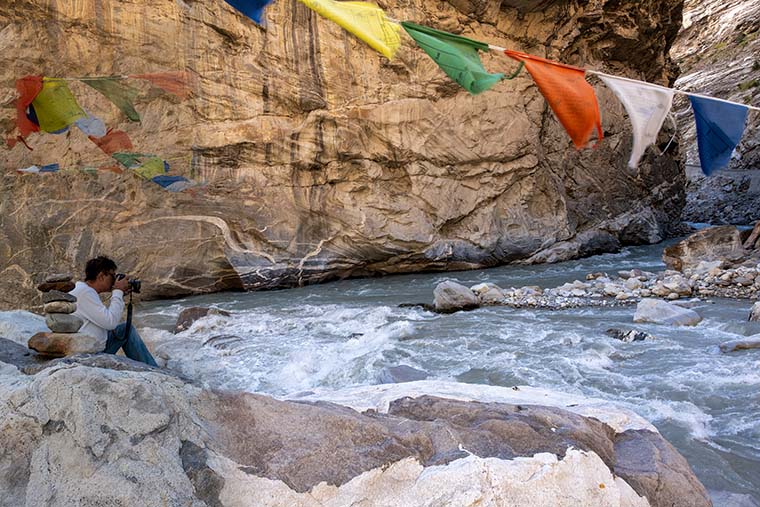
A tiny dhaba around is the place you contemplate filling your hungry tummy before moving ahead. Nothing great but tolerable.
From here on, the climb up the dry mountain resumes until you reach at Nako on the top of a mountain, at the elevation of nearly 1200ft.
Considered the largest village at this height, you can also see the Reo Purgyal Mountain in its background. Reo Purgyal is the highest mountain in Himachal Pradesh, with the elevation of 22,362 ft.
At Nako, during the brief halt, you visit the 11th century local Buddhist monastery and a mellow and quaint Nako Lake. Photographing this lake with its alluring reflections presents you with the satisfaction of a photographer.
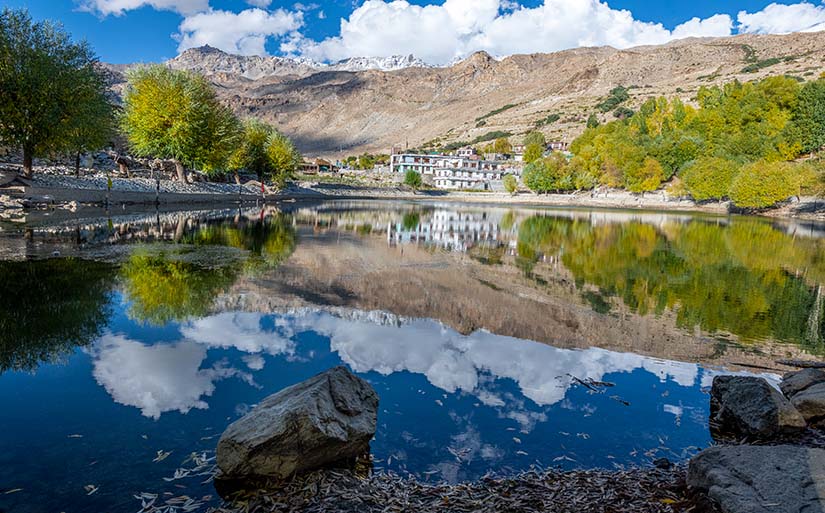
Now as you drive through the narrow roads carved from the edge of the mountains towards Tabo, you witness serpentine-shaped rivulets flowing 100s of feet below. A beautiful vista but scary too because of its incredible depth.
It’s 6 pm and going zigzag, you have finally reached your hotel at Tabo. Thankfully, Shree, your guide for the next five days at Spiti is there to meet you and plan things forward.


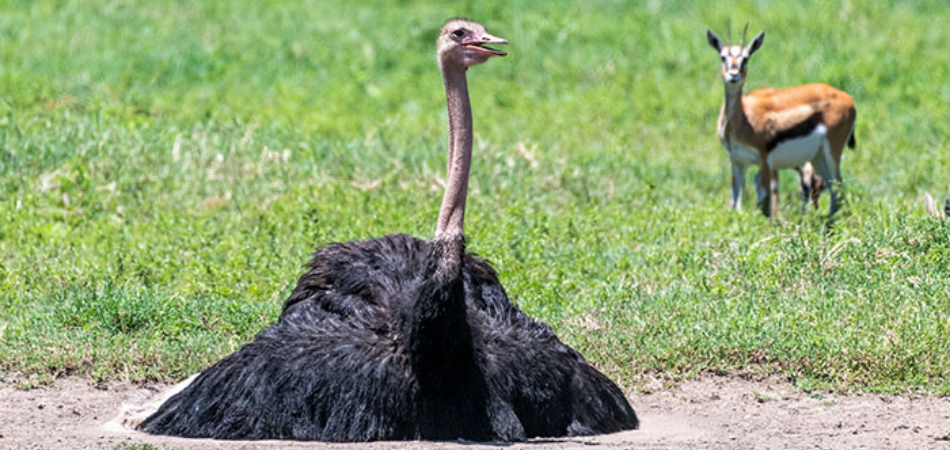
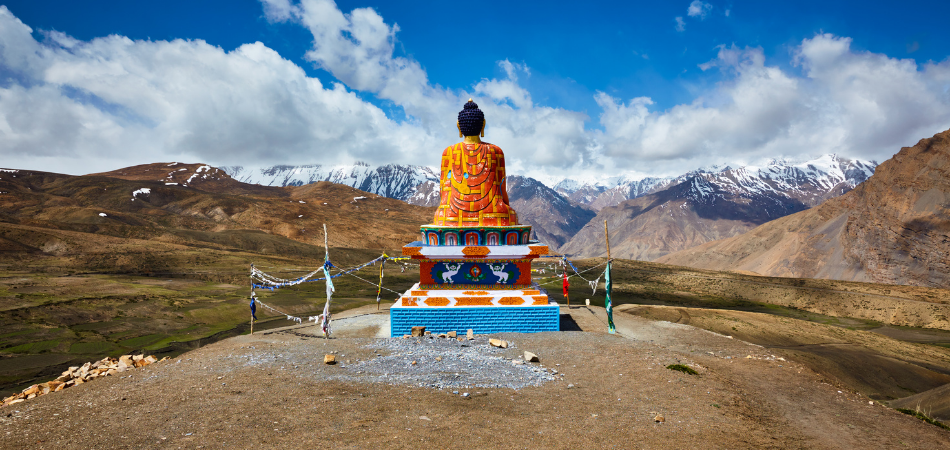
Dr Bhagwan Vyankatrao Kendre
Once again I traveled Spiti valley with you and with your awesome clicks.
This book will ignite one who loves to travel.
I am referring this to my travel loving group.
Thanks for sharing
Bhupender Gupta
Thnx for your encouraging comments
Pingback: Tabo to Kaza in Picturesque Spiti Valley-Part 2 – new